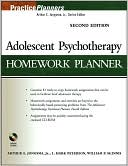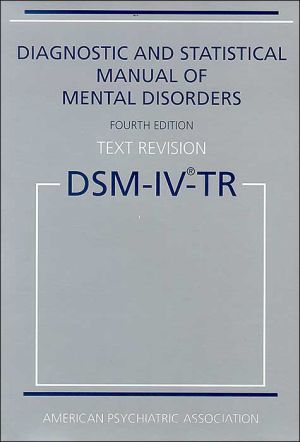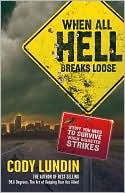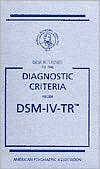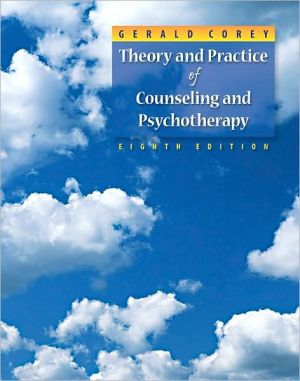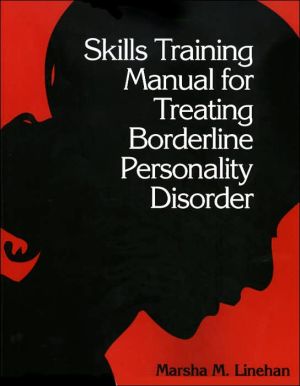Adolescent Therapy Homework Planner
Search in google:
Features new and updated assignments and exercises to meet the changing needs of mental health professionals The Adolescent Psychotherapy Homework Planner, Second Edition provides you with an array of ready-to-use, between-session assignments designed to fit virtually every therapeutic mode. This easy-to-use sourcebook features:83 ready-to-copy exercises covering the most common issues encountered by adolescent clients, such as eating disorders, suicidal ideation, and chemical dependenceA quick-reference format—the interactive assignments are grouped by behavioral problems including anger management, blended family conflicts, low self-esteem, and sexual acting outExpert guidance on how and when to make the most efficient use of the exercisesAssignments that are cross-referenced to The Adolescent Psychotherapy Treatment Planner, Fourth Edition—so you can quickly identify the right exercise for a given situation or problemA CD-ROM that contains all the exercises in a word-processing format—allowing you to customize them to suit you and your clients' unique styles and needs Additional resources in the PracticePlanners® series: Treatment Planners cover all the necessary elements for developing formal treatment plans, including detailed problem definitions, long-term goals, short-term objectives, therapeutic interventions, and DSM diagnoses. Progress Note Planners contain complete, prewritten progress notes for each presenting problem in the companion Treatment Planners. For more information on our PracticePlanners® products, including our full line of Treatment Planners, visit us on the Web at: www.wiley.com/practiceplanners
Practice Planners Series Preface. Acknowledgments. Homework Planners Introduction. SECTION I—Academic Underachievement. Exercise I.A Break It Down Into Small Steps. Exercise I.B Good Grade / Bad Grade Incident Reports. SECTION II—Adoption. Exercise II.A Questions and Concerns Around Being Adopted. Exercise II.B Some Things I’d Like You to Know. SECTION III—Anger Management. Exercise III.A Anger Control. Exercise III.B Stop Yelling. SECTION IV—Anxiety. Exercise IV.A Finding and Losing Your Anxiety. SECTION V—Attention- Defi cit / Hyperactivity Disorder (ADHD). Exercise V.A Getting It Done. Exercise V.B Social Skills Exercise. Exercise V.C Stop, Think, and Act. SECTION VI—Autism / Pervasive Developmental Disorder. Exercise VI.A Managing the Meltdowns. Exercise VI.B Progress Survey. SECTION VII—Blended Family. Exercise VII.A A Few Things About Me. Exercise VII.B Stepparent and Sibling Questionnaire. SECTION VIII—Chemical Dependence. Exercise VIII.A Keeping Straight. Exercise VIII.B Taking Your First Step. Exercise VIII.C Welcome to Recovery. SECTION IX—Conduct Disorder / Delinquency. Exercise IX.A Headed in the Right Direction. Exercise IX.B My Behavior and Its Full Impact. Exercise IX.C Patterns of Stealing. SECTION X—Depression. Exercise X.A Bad Thoughts Lead to Depressed Feelings. Exercise X.B Surface Behavior / Inner Feelings. Exercise X.C Three Ways to Change the World. Exercise X.D Unmet Emotional Needs—Identifi cation and Satisfaction. SECTION XI—Divorce Reaction. Exercise XI.A Identify a Change Resulting from Parents’ Divorce. Exercise XI.B Initial Reaction to Parents’ Separation. SECTION XII—Eating Disorder. Exercise XII.A Fears Beneath the Eating Disorder. Exercise XII.B Reality: Food Intake, Weight, Thoughts, and Feelings. SECTION XIII—Grief / Loss Unresolved. Exercise XIII.A Create a Memory Album. Exercise XIII.B Grief Letter. SECTION XIV—Low Self- Esteem. Exercise XIV.A Three Ways to Change Yourself. Exercise XIV.B Three Wishes Game. SECTION XV—Mania / Hypomania. Exercise XV.A Action Minus Thought Equals Painful Consequences. Exercise XV.B Clear Rules, Positive Reinforcement, Appropriate Consequences. Exercise XV.C I Am a Good Person. SECTION XVI—Medical Condition. Exercise XVI.A Coping with a Sibling’s Health Problems. Exercise XVI.B Effects of Physical Handicap or Illness on Self- Esteem and Peer Relations. SECTION XVII—Mental Retardation. Exercise XVII.A Activities of Daily Living Program. Exercise XVII.B You Belong Here. SECTION XVIII—Negative Peer Infl uences. Exercise XVIII.A Choice of Friends Survey. Exercise XVIII.B I Want To Be Like . . . . SECTION XIX—Obsessive- Compulsive Disorder (OCD). Exercise XIX.A Decreasing What You Save and Collect. Exercise XIX.B Refocus Attention Away from Obsessions and Compulsions. SECTION XX—Oppositional Defiant. Exercise XX.A Filing a Complaint. Exercise XX.B If I Could Run My Family. Exercise XX.C Switching from Defense to Offense. SECTION XXI—Panic / Agoraphobia. Exercise XXI.A Panic Attack Rating Form. Exercise XXI.B Panic Survey. SECTION XXII—Parenting. Exercise XXII.A Evaluating the Strength of Your Parenting Team. Exercise XXII.B One- on- One. Exercise XXII.C Transitioning from Parenting a Child to Parenting a Teen. SECTION XXIII—Peer / Sibling Conflict. Exercise XXIII.A Cloning the Perfect Sibling. Exercise XXIII.B Joseph, “His Amazing Technicolor Coat,” and More. Exercise XXIII.C Negotiating a Peace Treaty, SECTION XXIV—Physical / Emotional Abuse Victim. Exercise XXIV.A Letter of Empowerment. Exercise XXIV.B My Thoughts and Feelings. Exercise XXIV.C Take the First Step. SECTION XXV—Posttraumatic Stress Disorder (PTSD). Exercise XXV.A Effects of Chronic or Long- Term Trauma / Stress. Exercise XXV.B Impact of Frightening or Dangerous Event. SECTION XXVI—Psychoticism. Exercise XXVI.A Recognizing Early Warning Signs. SECTION XXVII—Runaway. Exercise XXVII.A Airing Your Grievances. Exercise XXVII.B Home by Another Name. Exercise XXVII.C Undercover Assignment. SECTION XXVIII—School Violence. Exercise XXVIII.A My Pent- Up Anger at School. Exercise XXVIII.B School Violence Incident Report. SECTION XXIX—Sexual Abuse Perpetrator. Exercise XXIX.A Getting Started. Exercise XXIX.B Opening the Door to Forgiveness. Exercise XXIX.C Your Feelings and Beyond. SECTION XXX—Sexual Abuse Victim. Exercise XXX.A Letter of Forgiveness. Exercise XXX.B My Story. Exercise XXX.C You Are Not Alone. SECTION XXXI—Sexual Acting Out. Exercise XXXI.A Connecting Sexual Behavior with Needs. Exercise XXXI.B Looking Closer at My Sexual Behavior. SECTION XXXII—Sexual Identity Confusion. Exercise XXXII.A Parents’ Thoughts and Feelings About Son / Daughter’s Sexual Orientation. Exercise XXXII.B Unsure. SECTION XXXIII—Social Phobia / Shyness. Exercise XXXIII.A Greeting Peers. Exercise XXXIII.B Reach Out and Call. Exercise XXXIII.C Show Your Strengths. SECTION XXXIV—Specifi c Phobia. Exercise XXXIV.A Gradually Facing a Phobic Fear. Exercise XXXIV.B School Fear Reduction. SECTION XXXV—Suicidal Ideation. Exercise XXXV.A No Self- Harm Contract. Exercise XXXV.B Renewed Hope. Exercise XXXV.C Symbols of Self- Worth. Appendix: Alternate Assignments for Presenting Problems. About the CD- ROM.
